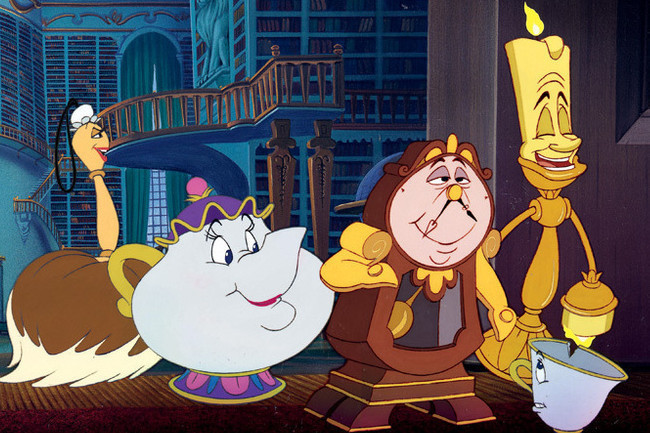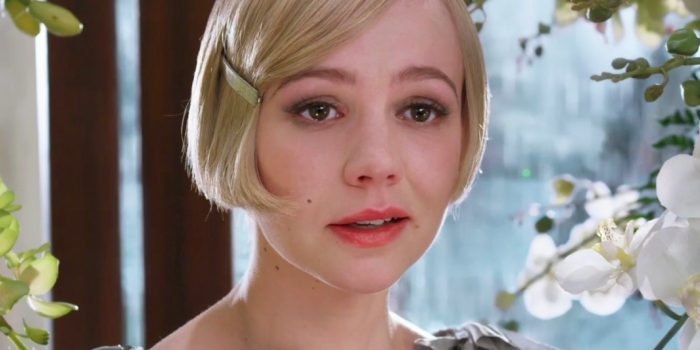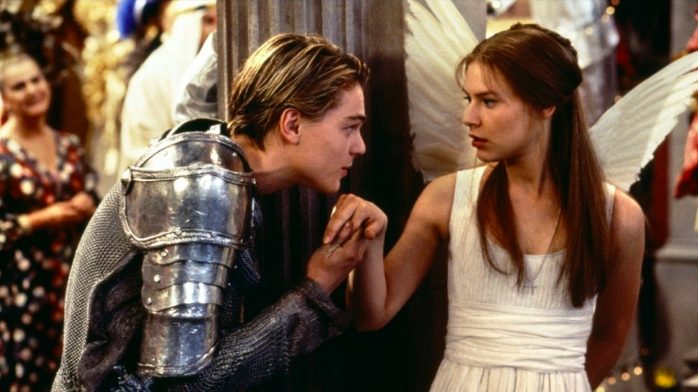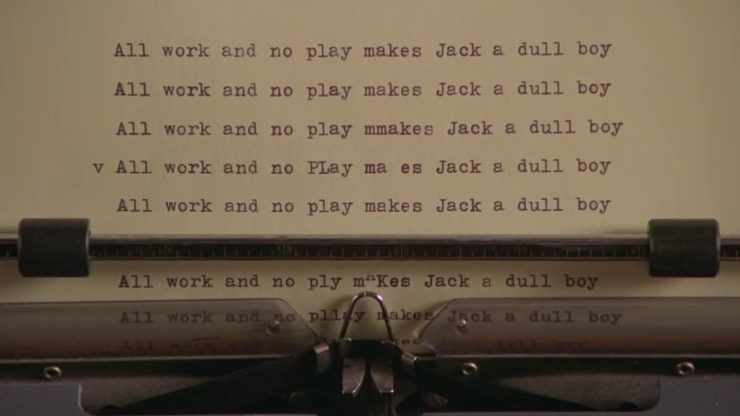You Never Know How Strong You Are Until Being Strong Is Your Only Choice Literary Device
Whether you're a writer, reader, pupil, or all of the in a higher place, it'south important to know how literary devices work. For writers, strong device usage tin elevate prose from meager to magnificent. For readers, they can provide a greater understanding of the text. And for students, knowing a few literary devices might simply exist the key to an A+ English paper!
But first, some of y'all may be wondering:what is a literary device, anyway? So for those of y'all who are new to the concept, allow's get over the definition of literary devices and how they're typically used in writing.
What are literary devices?
A literary device is a writing technique that writers apply to limited ideas, convey pregnant, and highlight important themes in a slice of text. A metaphor, for instance, is a famous case of a literary device.
These devices serve a wide range of purposes in literature. Some might work on an intellectual level, while others have a more than emotional effect. They may likewise work subtly to improve the menstruation and pacing of your writing. No matter what, if y'all're looking to inject something special into your prose, literary devices are a great place to start.
Of course, for readers, literary devices can exist difficult to identify. Merely here'due south a practiced rule of pollex: if you're reading a book and you find the author using language or narrative construction in an unusual way, there's probably a literary device at work. Indeed, some devices prove up so frequently, you may non even annals them as you're reading!
The near common literary devices are:
- Simile
- Metaphor
- Imagery
- Symbolism
- Flashbacks
- Foreshadowing
- Motif
- Allegory
- Juxtaposition
- Indicate of view
You've probably heard of most (if not all) of the devices higher up. Over again, they vary in terms of what they do: some of them relate to word usage and description, while others relate to how scenes play out. Some may be feature of specific genres — for example, you'll often encounter flashbacks and foreshadowing in psychological thrillers — while others, like similes and metaphors, can exist found in just most any text.
Nosotros'll also note that some literary devices double as rhetorical devices, which are used to convey pregnant and/or persuade readers on a certain point. The difference is that literary devices can be used to enhance writing in many different ways, non all of which involve trying to convince readers of something.
Basically, literary devices are artistic; rhetorical devices are informative and persuasive. That said, there can still exist quite a bit of overlap between the ii. Click here to learn more almost rhetorical devices.
Now for the pièce de résistance: our full list of literary devices.
🖊️
Which famous author do you lot write like?
Detect out which literary luminary is your stylistic soulmate. Takes i infinitesimal!
45+ literary devices anybody should know
Here are the literary devices yous should know:
1. Allegory
An apologue is a type of narrative that uses characters and plot to describe abstract ideas and themes. In an emblematic story, things represent more than they appear to on the surface. Many children's fables, such as The Tortoise and the Hare, are simple allegories near morality — but allegories can also be dark, circuitous, and controversial.
Instance: Brute Farm by George Orwell. This dystopian novella is one of modern literature's best-known allegories. A commentary on the events leading up to Stalin's rise and the formation of the Soviet Spousal relationship, the pigs at the heart of the novel represent figures such as Stalin, Trotsky, and Molotov.
2. Ingemination
Alliteration describes a series of words in quick succession that all start with the same alphabetic character or sound. It lends a pleasing cadency to prose and Village and the dollar as currency in Macbeth.
v. Anaphora
Anaphora is the repetition of a discussion or phrase at the outset of a series of clauses or sentences. It'due south often seen in poetry and speeches, intended to provoke a emotional response in its audience.
Example: Martin Luther Rex'southward 1963 "I Have A Dream" speech.
"I have a dream that one day this nation will ascension up and live out the true meaning of its creed.
"… and I have a dream that i day on the ruby-red hills of Georgia the sons of one-time slaves and the sons of former slave owners volition be able to sit down together at the table of alliance.
"… I have a dream that little children will i day live in a nation where they will not be judged by the color of their skin, but by the content of their character."
Similar term: repetition
half-dozen. Anastrophe
Anastrophe is a effigy of speech wherein the traditional sentence structure is reversed. So a typical verb-field of study-adjective sentence such as "Are you lot ready?" becomes a Yoda-esque describing word-verb-field of study question: "Set up, are you?" Or a standard adjective-noun pairing like "tall mountain" becomes "mountain tall."
Example: "Deep into that darkness peering, long I stood in that location wondering, fearing." — The Raven by Edgar Allan Poe
7. Anthropomorphism
To anthropomorphize is to utilize human traits or qualities to a not-homo thing such as objects, animals, or the weather. Simply dissimilar personification, in which this is done through figurative description, anthropomorphism is literal: a sun with a smiling face, for example, or talking dogs in a cartoon.
Examples: In Disney's Dazzler and the Brute, Mrs. Potts the teapot, Cogsworth the clock, and Lumière the candlestick are all household objects that human action and behave like humans (which, of course, they were when they weren't under a spell).
Similar term: personification

8. Adage
Anaphorismis a universally accepted truth stated in a concise, to-the-indicate manner. Aphorisms are typically witty and memorable, often becoming adages or proverbs every bit people repeat them over and over.
Example: "To err is human, to forgive divine." — Alexander Pope
9. Archetype
An archetype is a "universal symbol" that brings familiarity and context to a story. Information technology can be a character, a setting, a theme, or an activeness. Archetypes stand for feelings and situations that are shared across cultures and fourth dimension periods, and are therefore instantly recognizable to any audition — for example, the innocent child character, or the theme of the inevitability of expiry.
Example: Superman is a heroic classic: noble, cocky-sacrificing, and drawn to righting injustice whenever he sees it.
10. Chiasmus
Chiasmus is when two or more than parallel clauses are inverted. "Why would I exercise that?" you may be wondering. Well, a chiasmus might sound confusing and unnecessary in theory, but information technology'southward much more convincing in practise — and in fact, you lot've likely already meet it earlier.
Case: "Inquire not what your country tin practise for you; ask what you can exercise for your land." — John F. Kennedy
eleven. Colloquialism
Colloquialism is the utilise of casual and informal language in writing, which can besides include slang. Writers employ colloquialisms to provide context to settings and characters, and to make their writing audio more authentic. Imagine reading a YA novel that takes place in mod America, and the characters speak to each other like this:
"Good morn, Sue. I hope that you slept well and are prepared for this morning's science exam."
Information technology'southward not realistic. Colloquialisms help create believable dialogue:
" Hey Sue, what'd you get upwards to last night? This science test is gonna suck."
Example: Trainspotting by Irvine Welsh takes place in Scotland, a fact made undeniably obvious by the dialect: "Thing is, as ye git aulder, this graphic symbol-deficiency gig becomes mair sapping. Thir wis a time ah used tae say tae aw the teachers, bosses, dole punters, poll-revenue enhancement guys, magistrates, when they telt me ah was deficient: 'Hi, cool it, gadge, ah'yard jist me, jist intae a unlike sort ay gig fae youse but, ken?'"
12. Cumulative sentence
A cumulative sentence (or "loose sentence") is ane that starts with an independent clause, but then has additional or modifying clauses. They're often used for contextual or clarifying details. This may sound complex, but even, "I ran to the store to buy milk, bread, and toilet newspaper" is a cumulative sentence, because the starting time clause, "I ran to the shop," is a complete judgement, while the residuum tells united states extra data about your run to the store.
Example: "It was a big bottle of gin Albert Cousins had brought to the party, yep, merely it was in no way big enough to fill all the cups, and in certain cases to fill them many times over, for the more than than one hundred guests, some of whom were dancing not 4 feet in front of him." – Commonwealth, Ann Patchett
xiii. Dramatic irony
Dramatic irony is when the readers know more about the situation going on than at least 1 of the characters involved. This creates a difference betwixt the ways the audience and the characters perceive unfolding events. For instance, if we know that one character is having an affair, when that character speaks to their spouse, we will choice upwards on the lies and double-meanings of their words, while the spouse may take them at face value.
Case: In Titanic, the audience knows from the beginning of the film that the gunkhole will sink. This creates wry humor when characters remark on the safety of the send.
fourteen. Euphemism
A euphemismis an indirect, "polite" way of describing something too inappropriate or bad-mannered to address straight. However, most people will even so understand the truth about what'due south happening.
Case: When an elderly person is forced to retire, some might say they're beingness "put out to pasture."
15. Exposition
Exposition is when the narrative provides background information in order to help the reader understand what's going on. When used in conjunction with description and dialogue, this literary device provides a richer agreement of the characters, setting, and events. Be careful, though — also much exposition will quickly go tedious, thus undercutting the emotional impact of your work.
Case: "The Dursley'due south had everything they wanted, but they also had a secret, and their greatest fear was that somebody would find it." – Harry Potter and the Sorcerer's Rock, J.K. Rowling
16. Flashback
Flashbacks to previous events dissever up nowadays-day scenes in a story, normally to build suspense toward a big reveal. Flashbacks are likewise an interesting way to nowadays exposition for your story, gradually revealing to the reader what happened in the past.
Example: Every other chapter in the first part of Gone Girl is a flashback, with Amy's quondam diary entries describing her relationship with her husband before she disappeared.
Similar term: foreshadowing
17. Foreshadowing
Foreshadowing is when the author hints at events however to come up in a story. Similar to flashbacks (and oft used in conjunction with them), this technique is besides used to create tension or suspense — giving readers only enough breadcrumbs to keep them hungry for more.
Example: One popular method of foreshadowing is through partial reveals — the narrator leaves out cardinal facts to prompt readers' curiosity. Jeffrey Eugenides does this in The Virgin Suicides: "On the morn the last Lisbon daughter took her turn at suicide – it was Mary this time, and sleeping pills, similar Therese, the two paramedics arrived at the business firm knowing exactly where the knife drawer was, and the gas oven, and the beam in the basement from which it was possible to tie a rope."
Similar term: flashback
🖋️
Which writing app is right for y'all?
Detect out here! Takes 30 seconds
xviii. Frame story
A frame story is whatsoever office of the story that "frames" another role of it, such as ane graphic symbol telling another about their past, or someone uncovering a diary or a series of news articles that then tell the readers what happened. Since the frame story supports the rest of the plot, it is mainly used at the beginning and the stop of the narrative, or in pocket-sized interludes betwixt chapters or short stories.
Example: In The Name of the Wind by Patrick Rothfuss, Kvothe is telling Chronicler the story of his life over the span of three days. Most of the novel is the story he is telling, while the frame is whatever function that takes place in the inn.
nineteen. Hyperbole
Hyperboleis an exaggerated statement that emphasizes the significance of the argument's actual pregnant. When a friend says, "Oh my god, I haven't seen you in a meg years," that'southwardhyperbole.
Example: "At that time Bogotá was a remote, lugubrious urban center where an insomniac rain had been falling since the beginning of the 16th century." — Living to Tell the Tale past Gabriel García Márquez
20. Hypophora
Hypophora is much similar a rhetorical question, wherein someone asks a question that doesn't require an answer. Withal, in hypophora, the person raises a question and answers information technology immediately themselves (hence the prefix hypo,meaning 'under' or 'before'). It's frequently used when characters are reasoning something aloud.
Example: "Do you always picket for the longest day of the year and then miss it? I e'er watch for the longest day in the yr and then miss information technology." — Daisy in The Great Gatsby

21. Imagery
Imagery appeals to readers' senses through highly descriptive linguistic communication. It's crucial for any author hoping to follow the rule of "show, don't tell," every bit strong imagery truly paints a motion-picture show of the scene at manus.
Example: "In the difficult-packed dirt of the midway, after the glaring lights are out and the people have gone to bed, you volition find a veritable treasure of popcorn fragments, frozen custard dribblings, candied apples abandoned past tired children, sugar fluff crystals, salted almonds, popsicles, partially gnawed ice cream cones and wooden sticks of lollipops." — Charlotte's Webby East.B. White
22. In Medias Res
In medias res is a Latin term that ways "in the midst of things" and is a way of starting a narrative without exposition or contextual information. It launches straight into a scene or activity that is already unfolding.
Example: "Many years after, equally he faced the firing squad, Colonel Aureliano Buendía was to call back that distant afternoon when his begetter took him to discover ice." — The opening line of One Hundred Years of Confinement by Gabriel García Márquez
23. Irony
Irony creates a dissimilarity betwixt how things seem and how they actually are. In that location are 3 types of literary irony: dramatic (when readers know what will happen before characters do), situational (when readers expect a certain outcome, but to be surprised by a plow of events), and exact (when the intended meaning of a statement is the contrary of what was said).
Example: This opening scene from Orson Welles' A Touch of Evil is a great example of how dramatic irony can create tension.
24. Isocolon
If you're a neat freak who likes things just and then, isocolon is the literary device for yous. This is when ii or more than phrases or clauses have like structure, rhythm, and even length — such that, when stacked up on meridian of each other, they would line up perfectly. Isocolon often crops up in brand slogans and famous sayings; the quick, balanced rhythm makes the phrase catchier and more than memorable.
Example: Veni, vidi, vici ("I came, I saw, I conquered")
25. Juxtaposition
Juxtaposition places ii or more dissimilar characters, themes, concepts, etc. next, and the profound contrast highlights their differences. Why is juxtaposition such an effective literary device? Well, because sometimes the best way for us to understand something is by understanding what it's not.
Example: In the opening lines of A Tale of Two Cities, Charles Dickens uses juxtaposition to emphasize the societal disparity that led to the French Revolution: "It was the best of times, it was the worst of times, information technology was the age of wisdom, information technology was the historic period of foolishness, it was the epoch of belief, it was the epoch of incredulity, it was the flavour of Lite, information technology was the flavour of Darkness…"
Similar terms: oxymoron, paradox
26. Litotes
Litotes (pronounced lie-toe-teez) is the signature literary device of the double negative. Writers use litotes to express certain sentiments through their opposites, by proverb that that opposite is not the case. Don't worry, it makes more than sense with the examples. 😉
Examples: "You won't be sorry" (meaning y'all'll exist happy); "you're not wrong" (meaning you're right); "I didn't not similar it" (meaning I did)
27. Malapropism
If Shakespeare is the male monarch of metaphors, Michael Scott is the king of malapropisms. Amalapropism is when similar-sounding words supplant their appropriate counterparts, typically to comic consequence — one of the most commonly cited is "dance a flamingo," rather than a "flamenco." Malapropisms are often employed in dialogue when a grapheme flubs up their speech.
Example: "I am not to be truffled with."

28. Metaphor
A metaphor compares ii similar things by saying that ane of them isthe other. As you'd probable expect, when information technology comes to literary devices, this one is a heavy hitter. And if a standard metaphor doesn't do the trick, a writer can always try an extended metaphor: a metaphor that expands on the initial comparison through more elaborate parallels.
Example: Metaphors are literature's bread and butter (metaphor intended) — good luck finding a novel that is free of them. Hither's one from Frances Hardinge's A Face up Like Glass: "Wishes are thorns, he told himself sharply. They practice us no practiced, simply stick into our skin and hurt united states."
Similar term: simile
One metaphor case not enough? Check out this mail service, which has 97 of 'em!
29. Metonymy
Metonymy is similar symbolism, but even more than then. A metonym doesn't only symbolize something else, it comes to serve as a synonym for that thing or things — typically, a single object embodies an entire institution.
Examples: "The crown" representing the monarchy, "Washington" representing the U.S. government
Similar term: synecdoche
30. Motif
Whatever grade a motif takes, it recurs throughout the novel and helps develop the theme of the narrative. This might be a symbol, concept, or epitome.
Example: In Anna Karenina by Leo Tolstoy, trains are an omnipresent motif that symbolize transition, derailment, and ultimately violent death and destruction.
Like term: symbol
31. Onomatopoeia
Amusingly, onomatopoeia (itself a hard-to-pronounce word) refers to words that audio similar the thing they're referring to. Well-known instances of onomatopoeia include whiz, buzz, snap, grunt, etc.
Example:The excellent children's bookClick, Clack, Moo: Cows That Type. "Farmer Brown has a trouble. His cows like to type. All solar day long he hears:Click, clack, moo. Click, clack, moo. Clickety, clack, moo."
32. Oxymoron
An oxymoron comes from two contradictory words that describe 1 thing. While juxtaposition contrasts two story elements, oxymorons are about the actual words you are using.
Example: "Parting is such sweet sorrow." — Romeo and Julietby Shakespeare. (Notice 100 more than examples of oxymorons hither.)
Like terms: juxtaposition, paradox

33. Paradox
Paradox derives from the Greek discussion paradoxon, which means "beyond belief." It's a statement that asks people to retrieve exterior the box by providing seemingly illogical — and yet really truthful — premises.
Example: In George Orwell's 1984, the slogan of the totalitarian authorities is built on paradoxes: "War is Peace, Freedom is Slavery, Ignorance is Force." While we might read these statements as plain contradictory, in the context of Orwell's novel, these blatantly decadent sentiments have become an accepted truth.
Similar terms: oxymoron, juxtaposition
34. Personification
Personification uses human traits to depict non-human being things. Again, while the same anthropomorphism actually applies these traits to non-human things, personification means the beliefs of the thing does not really change. It'south personhood in figurative linguistic communication merely.
Example: "Merely before it was dark, as they passed a peachy island of Sargasso weed that heaved and swung in the light bounding main as though the sea were making love with something under a yellow coating, his small line was taken past a dolphin." — The Sometime Man and the Seaby Ernest Hemingway
Similar term: anthropomorphism
35. Bespeak of view
Indicate of view is, of form, the style of narration in a story. At that place are many POVs an author can choose, and each one will have a different impact on the reading experience.
Instance: 2d person POV is uncommon because it directly addresses the reader — not an easy narrative way to pull off. One popular novel that manages to employ this perspective successfully is Bright Lights, Large Urban center by Jay McInerney: "You lot are not the kind of guy who would be at a place like this at this time of the morning. Simply hither you are, and you lot cannot say that the terrain is entirely unfamiliar, although the details are fuzzy."
36. Polysyndeton
Instead of using a unmarried conjunction in a lengthy statements, polysyndeton uses several in succession for a dramatic effect. This 1 is definitely for authors looking to add together a fleck of artistic flair to their writing, or who are hoping to portray a particular (usually naïve) sort of voice.
Example: "Luster came abroad from the flower tree and we went along the fence and they stopped and we stopped and I looked through the debate while Luster was hunting in the grass." — The Sound and the Fury by William Faulkner
37. Repetition
Repetition, repetition, repetition… where would we be without it? Though too much repetition is rarely a skilful thing, occasional repetition can be used quite effectively to drill home a betoken, or to create a certain atmosphere. For example, horror writers frequently use repetition to make the reader experience trapped and scared.
Example: In The Shining, Jack Torrance types over and once again on his pages, "All piece of work and no play makes Jack a dull male child." In this case, obsessive repetition demonstrates the character's unraveling mind.
Like term: anaphora

38. Satire
Writers usesatire to brand fun of some aspect of human nature or society — usually through exaggeration, ridicule, or irony. At that place are countless ways to satirize something; nearly of the time, yous know it when you read information technology.
Example: The famous adventure novel Gulliver's Travels by Jonathan Swift is a classic example of satire, poking fun at "travelers' tales," the government, and indeed human nature itself.
39. Simile
A simile draws resemblance between two things by proverb "Thing A is like Thing B," or "Thing A is as [adjective] as Thing B." Different a metaphor, a similar does not posit that these things are the aforementioned, but that they are alike. As a result, it is probably the most common literary device in writing — you can most e'er recognize a simile through the use of "like" or "equally."
Example: There are 2 similes in this description from Circeby Madeline Miller: "The ships were golden and huge every bit leviathans, their rails carved from ivory and horn. They were towed by grinning dolphins or else crewed past 50 black-haired nereids, faces silver as moonlight."
Similar term: metaphor
xl. Soliloquy
Soliloquy involves a graphic symbol speaking their thoughts aloud, usually at length (and oft in a Shakespeare play). The graphic symbol in question may be alone or in the visitor of others, but they're not speaking for the do good of other people; the purpose of a soliloquy is for a grapheme to reflect independently.
Example: Village's "to exist or non to be" spoken communication, in which he ruminates on the nature of life and death, is a archetype dramatic soliloquy.
41. Symbolism
Authors turn to tangible symbols to correspond abstract concepts and ideas in their stories Symbols typically derive from objects or non-humans — for instance, a pigeon might stand for peace, or raven might represent death.
Example: In The Great Gatsby, Fitzgerald uses the eyes of Doctor T.J. Eckleburg (actually a faded optometrist'due south billboard) to represent God and his judgment of the Jazz Historic period.
Like term: motif
42. Synecdoche
Synecdoche is the usage of a role to stand for the whole. That is, rather than an object or title that'southward but associated with the larger concept (as in metonymy), synecdoche must really be fastened in some fashion: either to the name, or to the larger whole itself.
Examples: "Stanford won the game" (Stanford referring to the full title of the Stanford football squad) or "Squeamish wheels you got at that place" (wheels referring to the unabridged car)
Similar term: metonymy
43. Tautology
A tautology is when a sentence or short paragraph repeats a discussion or phrase, expressing the aforementioned idea twice. Often, this is a sign that you should trim your work to remove the redundancy (such as "frozen water ice") just can also be used for poetic emphasis.
Example: "But the fact is I was napping, and then gently you came rapping, And and so faintly you came tapping, borer at my chamber door" – The Raven, Edgar Allan Poe
45. Tmesis
Tmesis is when a word or phrase is cleaved up by an interjecting word, such equally abso-freaking-lutely. It'due south used to describe out and emphasize the idea, oft with a humorous or sarcastic slant.
Example: "This is not Romeo, he'due south some other where." – Romeo and Juliet, William Shakespeare
46. Tone
Tone refers to the overall mood and bulletin of your volume. It's established through a diverseness of means, including voice, label, symbolism, and themes. Tone sets the feelings you lot want your readers to take away from the story.
Example: No affair how serious things get in The Good Place, there is always a take chances for a character to redeem themselves by improving their behavior. The tone remains hopeful for the future of humanity in the face of overwhelming odds.
47. Tragicomedy
Tragicomedy is merely what it sounds like: a blend of tragedy and comedy. Tragicomedy helps an audience procedure darker themes by allowing them to laugh at the situation even when circumstances are dour.
Instance: Lemony Snicket's A Serial of Unfortunate Events uses wordplay, cool situations, and over-the-top characters to provide sense of humor in an otherwise tragic story.
48. Zoomorphism
Zoomorphism is when yous accept animate being traits and assign them to anything that's not an animal. It's the reverse of anthropomorphism and personification, and tin exist either a physical manifestation, such every bit a god appearing as an animate being, or a comparison, similar calling someone a busy bee.
Instance: When vampires plow into bats, their bat form is an example of zoomorphism.
Similar terms: anthropomorphism, personification
Readers and writers alike tin can get a lot out of agreement literary devices and how they're used. Again, readers can use them to gain insight into the author'due south intended meaning behind their piece of work, while writers can use literary devices to meliorate connect with readers. Only whatsoever your motivation for learning them, you certainly won't be pitiful you lot did! (Non least because you'll recognize the device I simply used in that sentence. 😏)
Which literary devices are your favorites? Share any thoughts, questions, or soliloquies in the comments below!
Source: https://blog.reedsy.com/literary-devices/

0 Response to "You Never Know How Strong You Are Until Being Strong Is Your Only Choice Literary Device"
Post a Comment